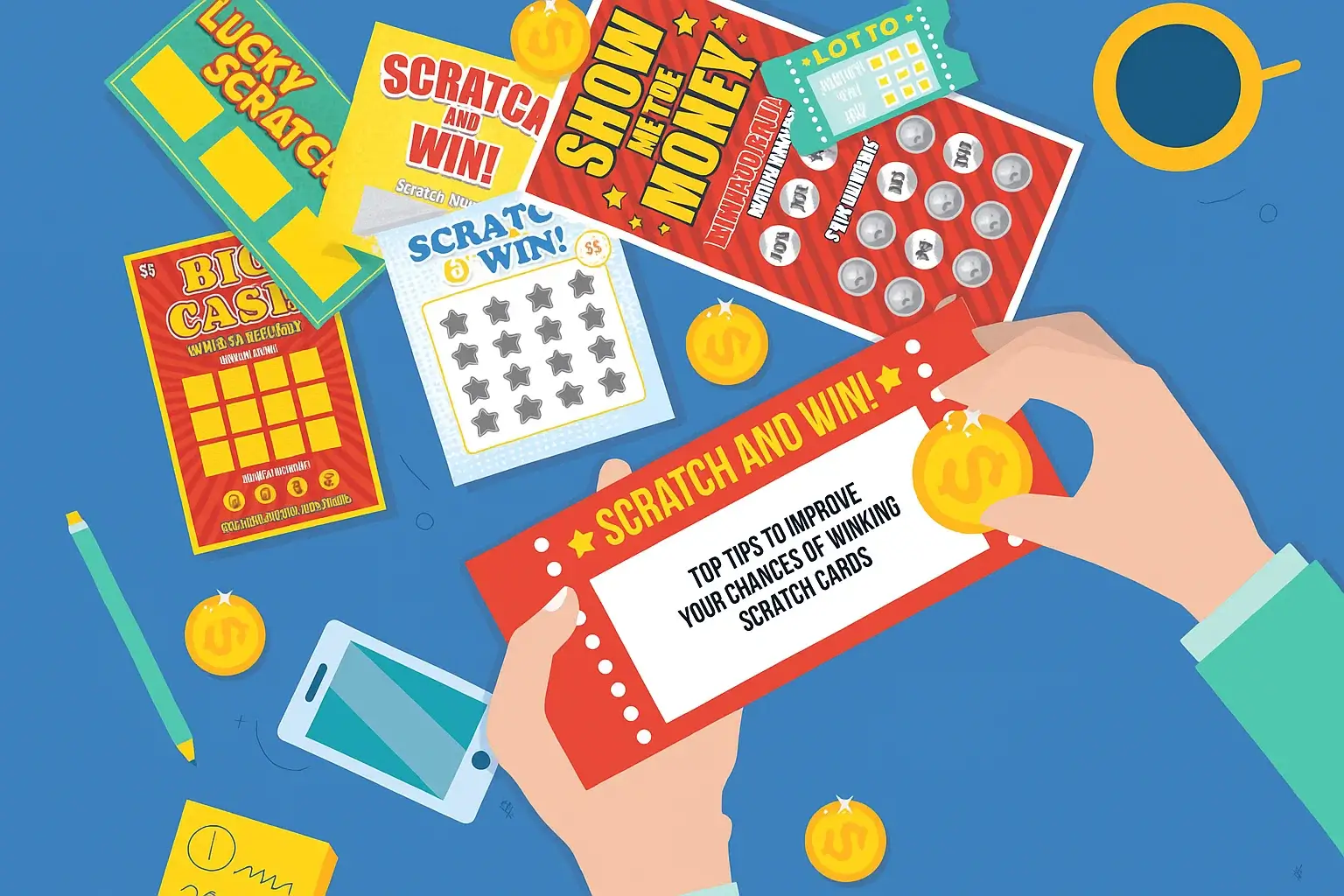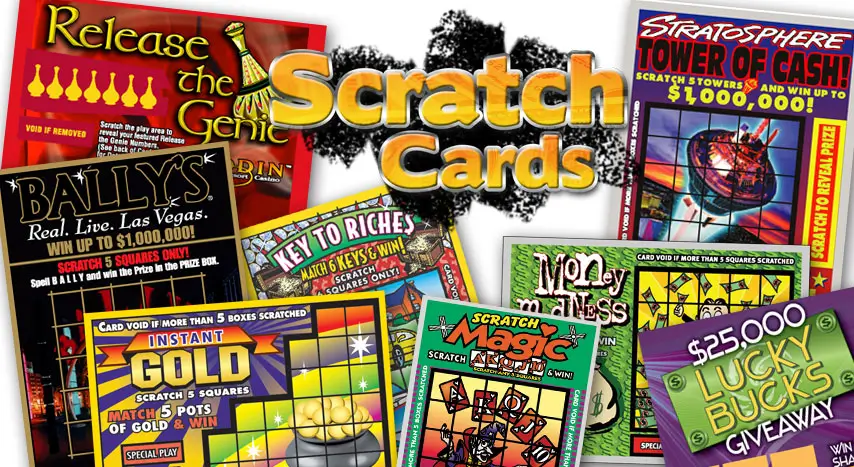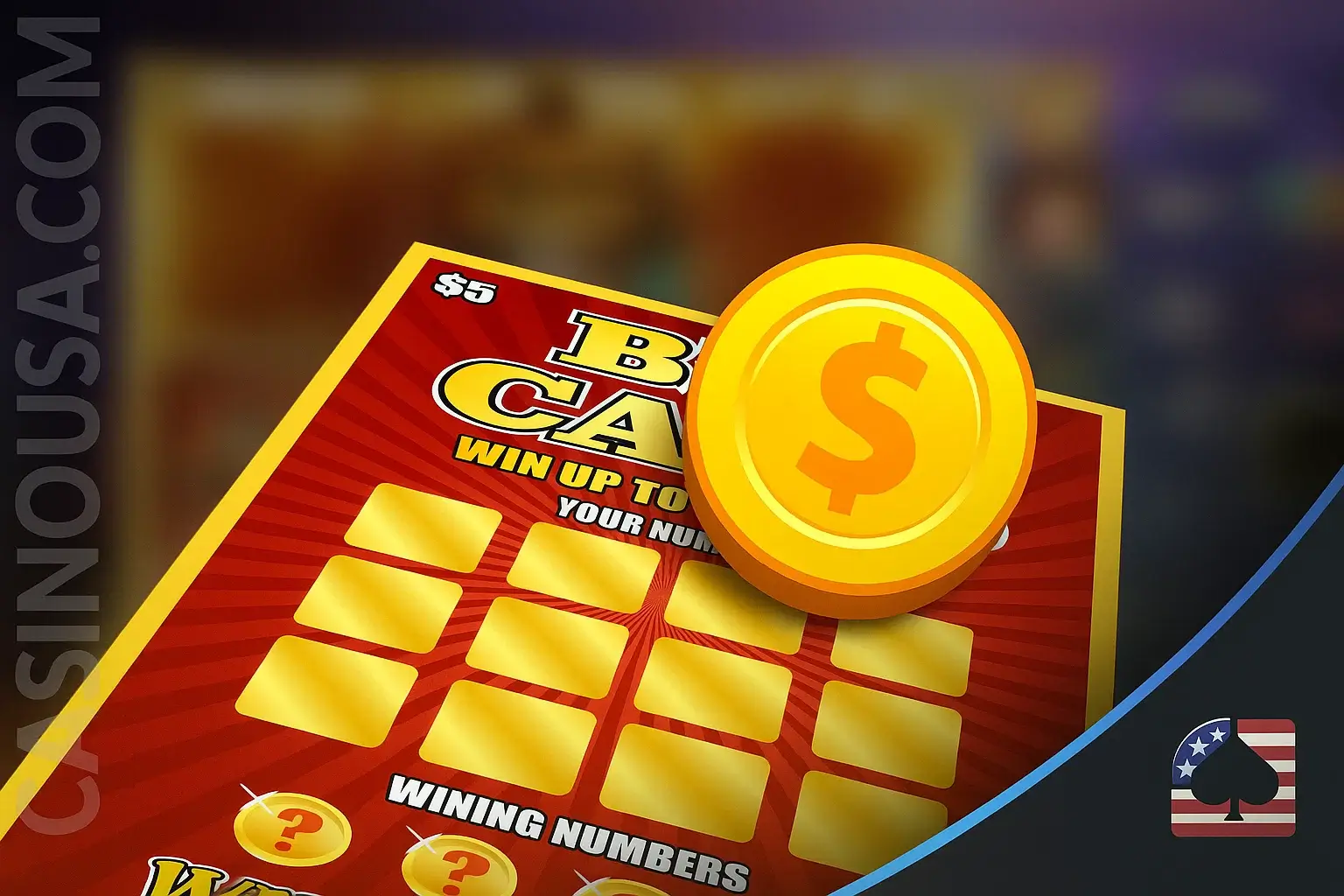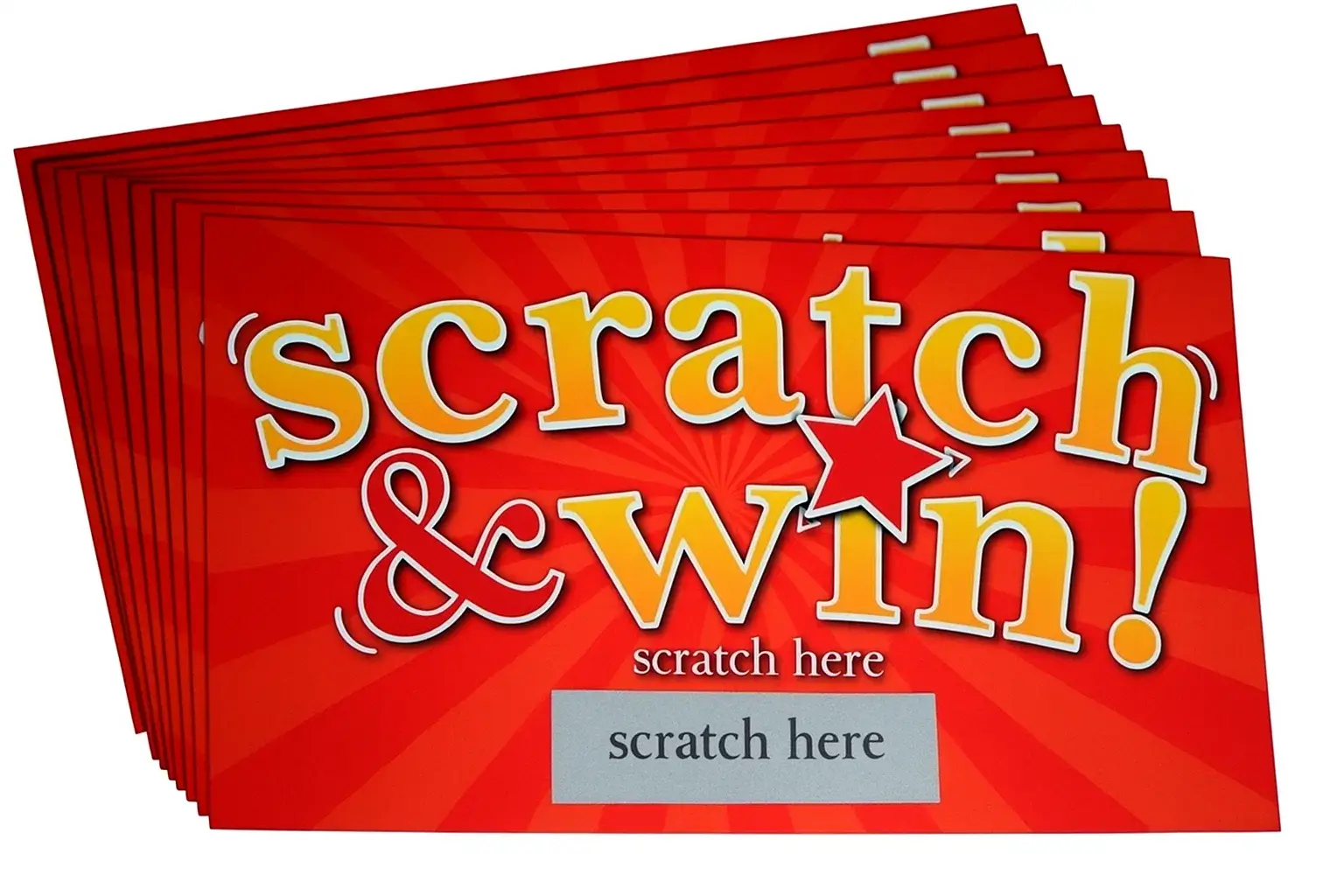Introduction
Scratch cards have been around for decades, and they remain one of the most accessible forms of gaming entertainment worldwide. Whether you’re standing in a convenience store eyeing a colorful ticket or playing online from your couch, scratch cards offer a unique blend of simplicity and excitement. But here’s the thing—just because they’re easy to play doesn’t mean you should play blindly.
After years of observing player behavior and analyzing the mechanics of scratch card gaming, I’ve come to understand that even simple games reward strategic thinking. This comprehensive guide breaks down everything you need to know about scratch cards: from understanding the mysterious RTP (Return to Player) percentage to managing your bankroll like a true professional.
Whether you’re completely new to scratch cards or you’ve been playing for years, this review will give you practical, actionable advice that actually works. Let’s dig in.
Understanding RTP and Choosing the Right Scratch Card
What is RTP and Why It Matters
RTP—Return to Player—is arguably the single most important number you need to understand about any game of chance. Simply put, RTP is the percentage of all money wagered on a game that the game is designed to return to players over time.
Here’s a practical example: if a scratch card has an 85% RTP, this means that for every 100 dollars wagered across many plays, the game will statistically return 85 dollars to players (and the 15% goes to the operator, covering costs and profit). Now, this doesn’t mean you personally will lose 15% every time you play—that’s not how it works. But across thousands and thousands of plays, that’s the long-term pattern.
Why am I emphasizing this? Because RTP is the single most reliable indicator of whether a game favors you or the house. The higher the RTP, the better your odds. It’s not guaranteed, but it’s the best metric we have.
The RTP Spectrum: What’s Good, What’s Bad
Different scratch cards have wildly different RTPs. Here’s what you should know:
Premium Games (85-97% RTP): These are the cream of the crop. Online platforms sometimes offer scratch cards with RTPs reaching 95% or even higher. These games are designed to be player-friendly while still profitable for operators over the long term. If you’re choosing between games, always gravitate toward these when available.
Standard Games (82-87% RTP): This is the middle ground, the most common range for both online and retail scratch cards. These games are fair, but they do provide a consistent edge to the house. Most legitimate operators use RTPs in this range.
Budget Games (75-82% RTP): These are the games with tighter odds. You’ll find these at some retail locations or in questionable online casinos. While not necessarily “rigged,” they definitely favor the operator more heavily. I’d suggest avoiding these if you have access to better options.
Dangerous Games (Below 75% RTP): If you ever encounter scratch cards with RTPs below 75%, alarm bells should ring. These games are intentionally stacked against players. Unless you enjoy giving your money away, stay away.
How to Find RTP Information
Online platforms are transparent about RTP. Most legitimate casinos display RTP percentages clearly on the game information page. Look for a small “i” icon, settings button, or “About This Game” section. The RTP should be right there.
Retail scratch cards are trickier. The odds are usually printed somewhere on the card or packaging—look at the back of the ticket carefully. However, retail odds are sometimes less favorable than online because of distribution costs. If you prefer retail tickets, this is just another reason to be selective.
Official websites and reports: Regulated gaming jurisdictions often publish database information about licensed games. If you’re in Europe, Canada, or other regulated markets, you can sometimes look up specific game information through official channels.
Here’s my professional advice: before spending money on any scratch card, spend two minutes finding its RTP. It takes minimal effort and can make a real difference over time.
Comparing Different Types of Scratch Cards
Not all scratch cards are created equal, and I’m not just talking about RTP. Different games have different payout structures.
High-Frequency, Low-Payout Games: These games win often but with small prizes. You might win on 40% of your plays, but most wins are 2x your bet or less. These games are psychologically appealing because you feel like a winner often, but profits accumulate slowly.
Low-Frequency, High-Payout Games: These games win less often—maybe 20-30% of the time—but when they do, the payouts can be substantial. These games build suspense and can deliver bigger paydays, but you’ll experience losing streaks more regularly.
Balanced Games: The best scratch cards balance both elements. You’ll experience regular small wins with occasional bigger payouts. These games feel rewarding without being deceptive.
My recommendation? Start with a game’s RTP as your primary filter, then choose based on your psychological preference. If you enjoy frequent small wins, go for high-frequency games. If you’re hunting for bigger payouts and can handle some losses, balanced or low-frequency games might suit you better.
Bankroll Management—The Skill That Separates Winners from Losers
Why Bankroll Management Matters More Than Luck
I’ve seen players with incredible luck lose everything, and I’ve seen players with average luck sustain enjoyable gaming for years. The difference? Bankroll management. It’s not flashy, and it won’t guarantee you’ll win, but it might be the most important skill in all of gaming.
Your bankroll is the total amount of money you’ve set aside specifically for gaming. It’s not money you need for rent, food, or emergencies. It’s entertainment money—money you’re prepared to lose.
The Golden Rule: Never Risk More Than You Can Afford to Lose
This isn’t just advice; it’s the foundation of responsible gaming. Before you play a single scratch card, ask yourself: “If I lose every dollar I’m about to spend, will my life be significantly worse off?” If the answer is yes, don’t play.
For scratch cards, I recommend this approach: allocate a monthly entertainment budget. This might be $50, $100, or $500—whatever feels right for your financial situation. This is your entire scratch card bankroll for the month. Once it’s gone, you’re done playing until next month.
The Percentage System: Smart Unit Sizing
Here’s where bankroll management gets practical. Let’s say you’ve allocated $100 as your monthly scratch card budget. Should you spend $10 on a single card? $50? Here’s the system I recommend:
Divide your bankroll into units. Take your total bankroll and divide it into 20-50 equal units. If you have $100, your units are $2-5. If you have $500, your units are $10-25.
Never spend more than one unit per card. If your unit is $5, play $5 scratch cards. This approach serves two purposes: it extends your playing time, and it limits your losses if you hit a losing streak.
Track your wins and losses. Keep a simple record. This serves a psychological purpose—it keeps you honest and aware of your actual spending patterns, not just your perception of them.
The Win Limit Strategy
Here’s a technique that separates casual players from disciplined ones: set a win target.
If your monthly budget is $100 and you’re fortunate enough to win $50 in the first day, here’s what many players do—they keep playing, trying to turn $50 into $100 or $500. Spoiler alert: the house edge eventually catches up with them, and they end up losing more than they would have if they’d stopped.
Instead, try this: if you double your session bankroll, seriously consider stopping. If you came to play with $20 and you’ve won $20 (now have $40), that’s a great session. Pocket that win and walk away. This isn’t a guarantee you’ll be ahead—previous losses might have already happened—but it’s a psychological anchor that prevents greed from destroying discipline.
Loss Limits: Knowing When to Stop
Just as important as a win limit is a loss limit. Decide in advance how much you’re willing to lose in a session. If you brought $20 to play and you’ve lost $20, stop. Don’t reach for a credit card, don’t ask to borrow money, don’t tell yourself “just one more.” Stop.
The sting of a loss is real, and our brains are wired to chase that loss. Every casino in the world depends on this psychological phenomenon. Being aware of it is your first defense against it.
The Bankroll Expansion Strategy for Consistent Players
If you’ve been playing responsibly and you’ve actually accumulated profits, here’s a strategy for gradually increasing your stakes:
Only increase your bankroll with profits, never with fresh money. If you’ve been playing monthly and you’ve accumulated $150 in profits over six months, you might consider increasing your monthly bankroll from $100 to $120. This is sustainable growth, and it doesn’t increase your risk.
Never go back to your base amount. If you increase to a higher bankroll and then experience a losing streak, don’t suddenly drop back down to $100 and supplement it with new money. Either stay at the new level or reduce gradually, but don’t yo-yo between amounts funded by different money sources.
This approach is conservative, but that’s the point. Bankroll management isn’t about getting rich quick; it’s about making your gaming sustainable and enjoyable.
Demo Mode vs. Real Money Play—Which Is Right for You?
The Rise of Demo Play
Most legitimate online scratch card platforms now offer demo mode—the ability to play with virtual currency that has no real-world value. This is a genuinely positive development in the gaming industry, and I’m glad to see it becoming standard.
But here’s the question everyone asks: is demo play actually useful, or is it just a tease designed to get you hooked before spending real money?
The Truth About Demo Mode
Demo play serves a legitimate purpose: it lets you understand the game mechanics without financial risk. This is genuinely valuable for beginners who want to learn how scratch cards work, what the different symbols mean, and how payouts are calculated.
However—and this is important—demo play has limitations. When you’re playing with virtual money, your decision-making is different. You’ll take risks you wouldn’t take with real money. You’ll play longer sessions. You might spend 1,000 virtual dollars in an hour when you’d never spend $1,000 in reality.
This isn’t necessarily bad—it’s just something to be aware of. Demo mode is best used as a teaching tool, not as a replacement for understanding bankroll management on real money play.
When to Use Demo Mode
Before your first real-money play: Spend 15-30 minutes playing demo versions of different games. Get comfortable with the interface. Learn how to scratch cards online (yes, this is different from retail scratching). Understand how you claim prizes.
When exploring a new platform: If you’ve found a new gaming site, play a few demo games before committing real money. This tells you whether the platform feels trustworthy, whether the games load smoothly, and whether the whole experience feels right.
When learning game variations: Different scratch card games have different mechanics. Some are match-3 games, others have multiplier features, some have bonus rounds. Demo play is perfect for understanding these variations before risking money.
To cool off during a losing streak: If you’ve hit a rough patch with your real money bankroll, playing demo games can satisfy the urge to play without bleeding more money. It’s a healthier alternative to walking away entirely (if you’re not ready to stop) or continuing to lose real money.
When Demo Mode Can Be Misleading
Here’s where I need to be honest with you: some platforms offer demo games with different RTPs than their real-money equivalents. This is technically legal in many jurisdictions, but it’s definitely sketchy. A 95% RTP demo game might correspond to a 78% RTP real-money version. This is deceptive, even if it’s technically disclosed somewhere in the terms.
How do you protect yourself? Only play demo games on platforms you trust. If you notice a dramatic change in your win rate when you switch to real money, that’s a red flag. You don’t have to give that platform your business.
The Real Money Game: Why It Matters
Here’s what I want you to understand: real money play is psychologically different from demo play, and that difference is important. When money is real, you play smarter. You think more carefully about your choices. Your emotions are engaged in a way they simply aren’t with virtual currency.
This is actually a good thing. It means you’ll naturally bankroll manage better on real money than in demo mode. Your brain recognizes something is at stake, and it activates disciplines that demo play doesn’t trigger.
My Recommendation: The Practical Approach
Start with demo play to learn the mechanics. Spend 30 minutes exploring, understanding the rules, and getting comfortable. Then move to real money with a small, predetermined bankroll—maybe $20-50 for your first session.
This gives you the best of both worlds: enough learning to avoid silly mistakes, plus real money stakes that trigger your natural caution and discipline.
The Mystery Unveiled—How RNG Works in Scratch Cards
What is RNG and Why It Matters
RNG stands for Random Number Generator. It’s the mathematical engine that determines whether you win or lose on any given scratch card play. Understanding RNG won’t help you beat the odds—nothing will—but it will help you trust that the game is fair.
Here’s the basic principle: every outcome on a scratch card is determined by a random number generator before you even start scratching. In physical retail cards, this was determined when the card was printed. In online scratch cards, this is determined the moment you click “play.”
How RNG Works in Online Scratch Cards
When you click to play an online scratch card, here’s what happens behind the scenes:
- Seed generation: The system takes various inputs—the exact millisecond you clicked, your user ID, server time, and other data—to create a unique seed.
- Number generation: This seed is fed into a mathematical algorithm that produces a sequence of random numbers.
- Outcome determination: These random numbers are used to determine what symbols appear on your card and whether you win.
- Display: The game shows you these pre-determined results as if you’re discovering them through scratching.
The key word here is “pre-determined.” Your results weren’t determined when you scratched—they were determined when you clicked play. The scratching animation is just that: animation.
RNG Fairness and Certification
This is crucial: legitimate online gaming platforms use certified RNGs. These are tested and audited by independent third parties to verify they’re actually random and not weighted toward the house.
Look for certifications from organizations like eCOGRA, TST (Technical Systems Testing), or GLI (Gaming Labs International). If a platform claims to offer fair games but doesn’t have third-party RNG certification, that’s a red flag. Legitimate platforms are transparent about their security and fairness measures.
The Misconception About Timing and Patterns
Here’s something I need to address directly: some players believe they can influence RNG outcomes through timing or pattern recognition. They think playing at certain times of day gives better results, or playing after losses increases the odds of a win.
This is false. RNG is genuinely random. There’s no pattern to exploit. Playing at 3 AM versus 3 PM makes zero difference. Playing after ten losses doesn’t increase your chances of a win. Your past results have no bearing on your future results.
I understand the temptation to believe in these patterns—humans are wired to see patterns, even where none exist. But gambling with money based on this belief is a fast way to lose that money.
Hot and Cold Spots: Why This Myth Persists
You might have heard someone say, “This machine is hot right now, lots of people are winning!” This is understandable human psychology but it’s not accurate. A game doesn’t get “hot” or “cold.” If you notice more wins happening recently, that’s either confirmation bias (you’re remembering the wins and forgetting the losses) or just statistical variance.
In a fair RNG system, over a large sample size, outcomes will cluster around the expected RTP. In smaller samples, you’ll see variance—sometimes more wins than expected, sometimes fewer. This is normal and doesn’t indicate the game is “due” for losses or wins.
How Retail Scratch Cards Handle Randomness
Physical retail scratch cards use a different system. When a batch of cards is printed, a printer’s algorithm determines which cards are winners and which are losers, with prizes distributed to match the advertised odds.
This means a deck of 1,000 cards might have exactly 250 winners distributed throughout the batch. The randomness isn’t in whether you’ll win (that’s pre-determined at printing), but in which card you happen to select.
This is actually fair, by the way. The randomness is in your selection, not in the game outcome. It’s just determined differently than online RNG.
Variance and the Long Game
Here’s something important to understand: even with a fair RNG and a good RTP, you’ll experience losing streaks. If a game has an 85% RTP, that means over millions of plays, 85% of money returns to players. But in your session, you might experience 10 losses in a row. This is variance, and it’s completely normal.
This is why bankroll management matters so much. Variance means you need enough money to ride out the bad streaks. A player with a $10 bankroll and a losing streak will be out of money. A player with a $100 bankroll and good unit sizing can ride out the same losing streak and continue playing.
Beginner’s Guide—Where to Start
Step 1: Understand Your Motivation
Before you play a single scratch card, ask yourself why you want to play. Is it:
- Entertainment and excitement?
- The hope of winning money?
- Stress relief and relaxation?
- Social connection (playing with friends)?
- Something else?
There’s no wrong answer, but your motivation should inform your approach. If it’s entertainment, budget accordingly and view losses as the cost of entertainment. If you’re chasing money, understand that scratch cards are unlikely to be your path to profit.
Step 2: Choose Your Platform Wisely
For online play, choose platforms that:
- Hold valid gaming licenses
- Display RTP information clearly
- Have third-party RNG certification
- Offer responsible gaming tools
- Have positive reviews and a history of reliable operation
For retail play, buy from reputable retailers. If you notice a convenience store owner making odd claims about card odds or trying to steer you toward specific games, that’s suspicious.
Step 3: Start Small and Slow
Your first session shouldn’t be about trying to win big. It should be about learning:
- How the platform works
- How different games feel
- What your natural losing streak tolerance is
- How you react emotionally to wins and losses
I recommend beginners start with a $20-50 session. This is small enough that losses won’t hurt, but large enough that you’ll get a real feel for the experience.
Step 4: Track Everything
Keep a simple spreadsheet or notebook:
- Date of play
- Total spent
- Total won
- Net result (won minus spent)
- How you felt before, during, and after
This tracking serves multiple purposes. It prevents you from lying to yourself about your actual results. It helps you identify emotional patterns. And it provides data that lets you improve your decisions over time.
Step 5: Set Your Boundaries
Before your second session, write down:
- Your monthly budget
- Your session unit size
- Your win limit (when you’ll consider stopping after a win)
- Your loss limit (when you’ll stop after a loss)
- The games you’ll play and why (based on RTP)
This isn’t restrictive—it’s liberating. With clear boundaries, you’ll play more confidently and make better decisions.
Step 6: Learn From Losses
Losing is part of the game. Embrace it as a learning opportunity. When you experience a loss streak, ask yourself:
- Did I stick to my bankroll plan?
- Did I play longer than intended?
- Did I increase my unit size after losses?
- How did I feel emotionally?
These lessons are more valuable than any temporary win.
Step 7: Know When to Quit
Not just when you’re ahead, but completely. If you find yourself:
- Playing longer than intended
- Thinking about gaming constantly
- Spending more than your budget
- Using borrowed money to play
- Neglecting other responsibilities
- Lying about your spending
These are warning signs. Gambling should be entertainment, not a compulsion. If it becomes the latter, seek help. Organizations like Gamblers Anonymous exist specifically to help people in this situation.
The Beginner’s First Month: A Practical Timeline
Week 1: Play demo games. Learn different game types. Choose a platform. Familiarize yourself with the interface. No real money yet.
Week 2: Play your first session with $25-50. Choose 1-2 games with strong RTPs (85%+). Use units of $2-5. Play until your bankroll is gone or you hit your win limit. Reflect on the experience.
Week 3: Play a second session if desired. Use the same budget and unit sizing. Review your tracking data from week 2. Adjust your strategy if needed.
Week 4: Optional third session. By now, you should have a good feel for whether scratch cards are the right entertainment for you. Make a decision about your ongoing commitment.
This gradual approach prevents you from making impulsive decisions with real money before you’re ready.
Conclusion
Scratch cards are inherently exciting entertainment. The simplicity is part of the appeal—you don’t need to learn complex strategies or sit through long games. You play, you know your result immediately, and you move on.
But that simplicity shouldn’t fool you into thinking strategy doesn’t matter. Every principle in this guide—understanding RTP, managing your bankroll, being honest about your limits, and using demo play strategically—these things matter.
Here’s my final advice: approach scratch cards as entertainment with a cost, not as investment or income. Set a budget you’re genuinely comfortable losing. Choose games with strong RTPs. Use proper bankroll management with appropriate unit sizing. Track your play honestly. And always maintain the discipline to walk away.
The players who get the most enjoyment and sustain the longest without negative consequences aren’t those who win big jackpots. They’re the ones who play smart, within their means, and with clear boundaries.
If you follow this guide, you won’t beat the odds—nobody does. But you’ll maximize your enjoyment, minimize your losses, and maintain a healthy relationship with gaming.
That’s not just good advice. It’s how you win at scratch cards.
Disclaimer: This guide is educational content about gaming and entertainment. Scratch cards are games of chance with a built-in house edge. There is no strategy that guarantees profit. Always gamble responsibly, within your means, and seek help if gaming becomes problematic.



